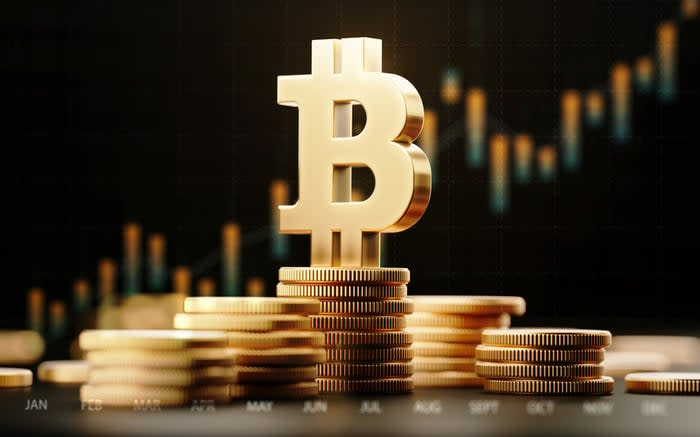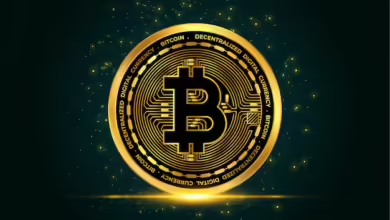Bitcoin: Is it time to buy, sell, or hold as the market changes today?
Although Bitcoin (CRYPTO: BTC) had a strong start in 2024, this cryptocurrency has lost some of those gains.

Despite making little progress in the past five months, the broader market outlook continues to evolve rapidly, as is customary in the cryptocurrency space.
A deeper examination of Bitcoin’s current status, macroeconomic indicators, and recent developments in the crypto industry reveals why, despite the recent downturn, Bitcoin remains a compelling buy today.
Short-Term Catalysts to Watch
Currently, several catalysts are placing Bitcoin in a bullish spotlight. These can be grouped into short-term and long-term categories, but both sets indicate why Bitcoin may be poised for another bullish phase in the near future. Let’s first explore some short-term factors.
1. Bitcoin Halving
One of the most significant events in Bitcoin’s lifecycle is its halving events, the latest of which occurred in April 2024. The halving process plays a crucial role in Bitcoin’s monetary policy, reducing the rewards received by miners by half, thereby decreasing the amount of new Bitcoin entering circulation. This effectively halves the growth rate of Bitcoin, creating upward price pressure as long as demand remains steady or increases.
Historically, Bitcoin has risen following each halving. In fact, Bitcoin’s price has typically increased by over 100% during halving years. Even more compelling is that Bitcoin has averaged a 350% return in the years following a halving. If history serves as a guide, the post-halving trajectory for Bitcoin could still yield significant gains for investors.
2. Emergence of Institutional Investors
Another bullish driver for Bitcoin is the influx of institutional investors. Over the past year, the introduction of Bitcoin exchange-traded funds (ETFs) has allowed major financial players to enter the market in a familiar and systematic manner. Since the launch of these ETFs, Wall Street giants like Goldman Sachs, BlackRock, and even state pension funds from Michigan and Wisconsin have joined the Bitcoin game. These institutions, previously constrained from direct investment in Bitcoin, now have a clear path to do so through ETFs.
The results have been nothing short of remarkable. These Bitcoin ETFs have become the most successful exchange-traded funds in history, reflecting a wave of demand. The introduction of institutional investors into the market has not only legitimized Bitcoin further but also has the potential to create immense buying pressure on its limited supply.
3. Federal Reserve’s Rate Cuts
The Federal Reserve’s recent decision to cut interest rates for the first time in over four years could serve as another significant catalyst for Bitcoin. While rate cuts and Bitcoin may seem unrelated at first glance, they have a close relationship on various levels.
First, when interest rates are lowered, investors typically feel incentivized to take on more risk. In low-rate environments, the opportunity cost of holding safer investments like bonds becomes less attractive. As a result, investors often shift their capital towards riskier assets, including stocks and cryptocurrencies, in search of higher returns. This so-called risk-on environment supports the price increase of Bitcoin.
Secondly, rate cuts lead to increased liquidity in the financial system. In the 2021 bull market, when rates were near zero, excess liquidity found its way into Bitcoin, contributing to a price increase of over 100% at one point.
Perhaps most importantly, rate cuts typically weaken the U.S. dollar, which can stimulate inflation. This is where Bitcoin’s unique characteristics truly shine. Unlike fiat currencies that central banks can print in unlimited quantities, Bitcoin has a hard supply cap of 21 million coins (with around 19.8 million currently in circulation). Its decentralized nature and fixed supply make it an attractive store of value, especially during inflationary times. As fiat currencies lose purchasing power, Bitcoin’s scarcity becomes more appealing, preserving its value over the long term.
Long-Term Value Proposition of Bitcoin
Bitcoin has many catalysts on the horizon that could drive its price higher. However, its true value extends far beyond these immediate factors.
In a world where government debt burdens are skyrocketing, fiat currencies are regularly devalued by inflation, and economic policies are enforced without regard for ordinary people, Bitcoin stands as a beacon of hope.
Its decentralized network and limited supply ensure that no central authority can manipulate it, making Bitcoin not just an asset, but perhaps a necessity for preserving (and increasing) wealth. This unique asset can act not only as a hedge against inflation but also against broader economic instability.
While there are numerous reasons to be optimistic about Bitcoin in the coming months, it’s important to remember that halvings come and go, institutional interest can wane, and monetary policies are always subject to change. All of this means that Bitcoin will experience more bearish markets over time. However, for those with a long-term outlook, Bitcoin’s value proposition remains strong, making it a compelling buy today and for the foreseeable future.
Should You Invest $1,000 in Bitcoin Right Now?
Before purchasing shares of Bitcoin, consider this:
The Motley Fool Stock Advisor team recently highlighted 10 stocks that investors can buy right now, and Bitcoin was not one of them. The 10 stocks that created this decline could yield monster returns in the coming years.
Consider a time when Nvidia was added to this list on April 15, 2005… If you had invested $1,000 at the time of our recommendation, you would have $712,454!*
Stock Advisor provides investors with a simple plan for success, including guidance on building a portfolio, regular updates from analysts, and two new stock picks each month. Since 2002, the returns of the Stock Advisor have more than quadrupled the S&P 500.*





